Family: Midwifery
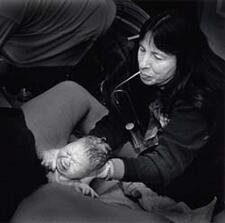
Alice Bailes

Lena Barber
Hannah Barnett-Trager
Hannah Barnett-Trager’s involvement in the literary world began when she helped found and then worked as a librarian at the Jewish Free Reading Room in London. She published her first article in 1919 and went on to write books for both children and adults. Trager’s writing discussed Jewish culture and politics, often drawing from her own experiences.
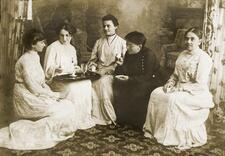
Olga Belkind-Hankin
Doctors: Medieval
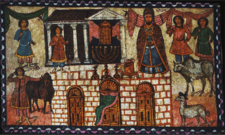
Elisheba, daughter of Amminadab: Midrash and Aggadah
Elisheba is mentioned only a single time in the Torah she-bi-khetav: Lit. "the written Torah." The Bible; the Pentateuch; Tanakh (the Pentateuch, Prophets and Hagiographia)Torah (Ex. 6:23), as the daughter of Amminadab, the sister of Nahshon and the wife of Aaron the High Priest. The Rabbis speak at large concerning her. They note her importance, since her life was bound up with the most distinguished families in Israel: her husband was appointed High Priest, her children were deputy high priests, her brother was nasi (chieftain) of the tribe of Judah and her brother-in-law Moses led the Israelites. The A type of non-halakhic literary activitiy of the Rabbis for interpreting non-legal material according to special principles of interpretation (hermeneutical rules).midrash accordingly applies to Elisheba the verse “And may your house be like the house of Perez whom Tamar bore to Judah” (Ruth 4:12), which was meant to signify that Elisheba, too, was descended from the royal line since she was from the tribe of Judah (Ruth Zuta 4:12). Commenting on Jacob’s blessing to Judah, “You, O Judah, your brothers shall praise” (Gen. 49:8), the Rabbis list Elisheba daughter of Amminadab among the important people and officials that were born to this tribe and call her “the mother of the priesthood” (Gen. Rabbah 97:8).
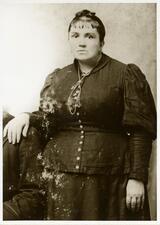
Rosa Fineberg
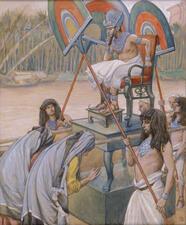
Hebrew Women in Egypt: Bible
Hebrew women in Egypt are critical figures in the Bible, especially concerning their maternal and physically nurturing roles. Hebrew midwives help male babies escape the infanticide commanded by the Pharaoh, and another woman helps save baby Moses’ life. These stories show how women were able to undermine the Pharaonic authority and ensure the survival of the Hebrew people in general.
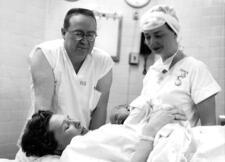
Flora Suhd Hommel

Jochebed: Midrash and Aggadah
The midrash portrays Jochebed as a wise woman who was righteous and God-fearing. By merit of her good deeds, she gave birth to the three leaders of the Exodus generation: Moses, Aaron, and Miriam.
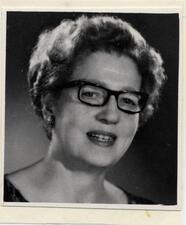
Lena Kenin
Lena Nemerovsky Kenin made major contributions to both gynecology and psychology with her successful medical practice and her groundbreaking work on postpartum depression.
Sarah Lishansky
A politically active nurse and midwife, Sarah Lishansky used her career to treat and care for workers in the Yishuv during the Second Aliyah.
Medieval Ashkenaz (1096-1348)
The Jews of medieval Ashkenaz are known for their prolific rabbis and for the Ashkenazic customs that became characteristic of many European Jewish communities. During the High Middle Ages, the women in these communities had many important roles women within the family and in the communal, economic, and religious life.
Midwife: Bible
Midwifery is one of the oldest professions, and several biblical narratives refer to midwives. In addition, in one psalm God is metaphorically depicted as a midwife, delivering a person from danger. Israelite obstetrical practices were probably similar to ones known from other ancient Near Eastern texts.
Midwife: Midrash and Aggadah

Miriam: Midrash and Aggadah
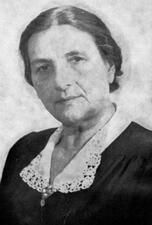
Moshavah
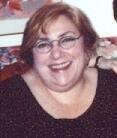
Sheryl Baron Nestel
Puah: Bible
Puah and Shifrah were the midwives who defied Pharaoh’s orders and allowed Israelite women to birth their sons in safety. It is not clear whether the midwives were Egyptian or Israelite. They may have been overseers for Pharoah’s harem and held positions of honor.
Puah: Midrash and Aggadah
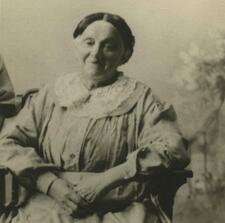
Hannah Sandusky
Shiphrah: Bible
Shiphrah: Midrash and Aggadah
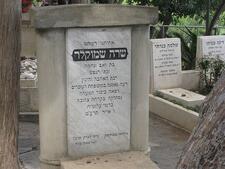
Sarah Shmukler
Sarah Shmukler was a nurse and midwife who emigrated to Palestine from the Russian Empire during the Second Aliyah period. Her short life was characterized by providing medical assistance to migrant workers in Palestine and by close friendships with her fellow pioneers.


